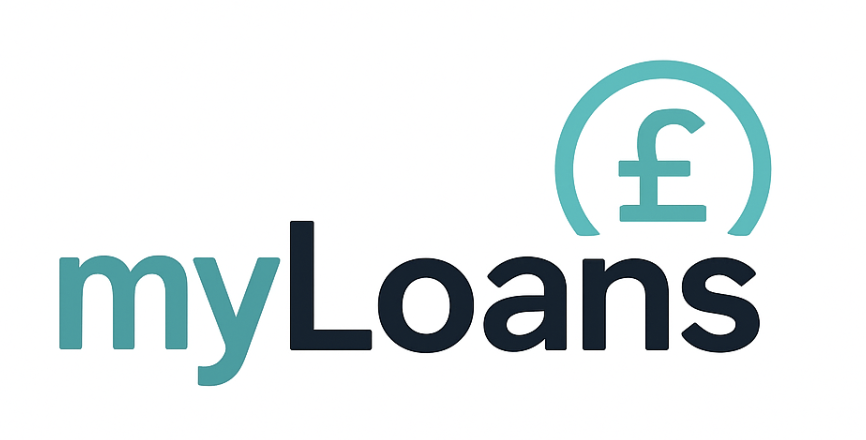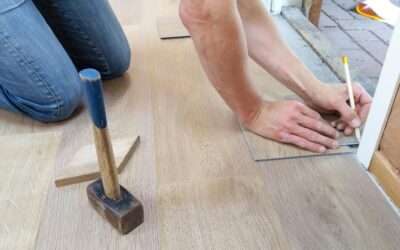Table of Contents
Introduction: Why More UK Homeowners Are Borrowing for Renovations
From kitchen upgrades to energy-efficient extensions, home improvement projects are a popular reason for borrowing in the UK. With rising property prices, many households are choosing to renovate rather than relocate.
A home improvement loan — usually an unsecured personal loan — allows you to spread the cost of renovations into fixed monthly payments. But which loan is best, how much can you borrow, and what are the risks?
This comprehensive guide explores everything you need to know about financing renovations in the UK, from loan types to eligibility checks, alternatives, and practical budgeting tips.
What Is a Home Improvement Loan?
A home improvement loan is a personal loan used specifically for renovations. Lenders don’t usually restrict how funds are spent as long as it relates to your property, but common uses include:
-
Kitchen or bathroom upgrades
-
Loft conversions or extensions
-
Energy-efficient improvements (solar panels, insulation, double glazing)
-
Garden landscaping or driveways
Types of Home Improvement Loans in the UK
1. Unsecured Personal Loan
-
No collateral required
-
Fixed rate, fixed term
-
Borrow £1,000–£25,000 typically
2. Secured Loan (Homeowner Loan)
-
Secured against your property
-
Larger borrowing amounts available
-
Lower APRs possible, but your home is at risk if you default
3. Green Loans / Energy Efficiency Loans
-
Offered by some lenders and councils
-
Designed for eco-friendly renovations
-
May include lower rates or grants
How Much Can You Borrow for Home Improvements?
-
Typical range: £1,000–£25,000 unsecured
-
Secured loans: Up to £100,000+ (depending on equity and lender)
-
Repayment terms: 1–7 years unsecured, up to 25 years secured
Example:
Borrow £10,000 at 8.9% APR over 5 years = ~£207/month, £12,420 total repayable.
Lender Criteria and Eligibility Checks
To approve a home improvement loan, lenders assess:
-
Credit score: Higher score = lower APRs.
-
Income & affordability: Can you afford repayments alongside existing commitments?
-
Employment status: Full-time, part-time, self-employed accepted with proof.
-
Equity (for secured loans): More equity = better terms.
Benefits of Using a Loan for Renovations
-
Predictable payments: Fixed monthly instalments.
-
Increases property value: Well-planned improvements often boost resale.
-
Cheaper than credit cards/overdrafts: Especially for larger projects.
-
Quick access: Some lenders release funds within 24–48 hours.
Risks and Downsides
-
Interest costs: Especially for bad credit or long terms.
-
Overcapitalisation risk: Spending more than the renovation adds in value.
-
Secured loan risks: Missing payments could mean losing your home.
-
Early repayment charges: Some loans penalise clearing debt early.
Alternatives to Home Improvement Loans
-
Remortgaging: Release equity at potentially lower rates.
-
Credit cards: 0% balance transfer or purchase cards for smaller projects.
-
Government schemes: Green Homes Grants (limited), local authority loans.
-
Savings: Cheapest if you can self-finance part of the project.
How to Budget for Renovation
-
Get multiple quotes from contractors.
-
Include hidden costs (planning permission, building regs).
-
Add 10–15% contingency for overruns.
-
Match loan term to renovation lifespan (e.g., don’t finance a bathroom for 10 years).
FAQs
Q: Can I get a home improvement loan with bad credit?
Yes, but APRs may be higher. Credit unions or guarantor loans may be alternatives.
Q: Is it better to remortgage or take a personal loan?
If you have significant equity and low mortgage rates, remortgaging may be cheaper. For smaller projects, a personal loan may be more flexible.
Q: Will a loan improve my property value?
Kitchens, bathrooms, and extensions usually add the most value. Decorative upgrades may not.
Q: How quickly can I get the funds?
Online lenders often provide same-day or next-day transfers once approved.
Conclusion: Renovate Smart, Borrow Wisely
A home improvement loan can unlock the potential in your property without draining your savings. From modernising living spaces to boosting energy efficiency, the right financing can transform your home.
But as with all borrowing, success lies in careful comparison, realistic budgeting, and ensuring repayments are affordable. Weigh the benefits of increased property value against the costs, and always choose a loan structure that matches your financial goals.
Done right, financing your renovations in 2025 could be the key to creating a home you love — and a smarter long-term investment.
Personal Loan Debt Consolidation UK – Is It Right for You?
Juggling multiple credit cards, overdrafts, or loans can be stressful and expensive. A debt consolidation loan allows you to combine everything into a single monthly repayment, often at a lower interest rate. In 2025, UK lenders from high street banks to online...
Emergency Loans UK – How to Borrow Fast in 2025
When an urgent expense hits — like car repairs, medical bills, or a broken boiler — quick access to funds can be essential. In 2025, emergency loans in the UK provide a way to borrow fast, with some lenders offering same-day decisions and payouts. This guide explains...
Top 10 Personal Loan Providers UK 2025 – Rates, Features & Eligibility
The UK personal loan market in 2025 offers more choice than ever, with banks, supermarkets, online lenders, and credit unions all competing for borrowers. The best deal for you depends on your credit score, loan size, and repayment term — but comparing providers side...
Best Debt Consolidation Loans UK 2025 | Top Options
Managing multiple debts can feel overwhelming, especially with credit cards, overdrafts, and personal loans all charging different interest rates. A debt consolidation loan can simplify your finances by rolling everything into one fixed monthly repayment — often at a...
Best Bad Credit Loans UK 2025 – Top Lenders Compared
Having a poor credit score, CCJs, or past defaults doesn’t mean borrowing is out of reach. In 2025, several UK lenders specialise in products designed for people with bad credit — offering smaller loans, flexible repayment terms, and eligibility checks that won’t harm...
Home Repair Loans UK – How to Cover Unexpected Costs in 2025
A leaking roof, broken boiler, or urgent plumbing issue can quickly turn into an expensive problem — often when savings aren’t available. In 2025, home repair loans in the UK provide a way to spread the cost of essential fixes into manageable monthly repayments. This...
Green Energy Loans UK – How to Finance Eco-Friendly Home Improvements in 2025
Eco-friendly upgrades such as solar panels, insulation, heat pumps, and EV chargers can cut energy bills and boost property value — but they require a significant upfront investment. In 2025, green energy loans in the UK provide a way to spread the cost of sustainable...
Moving House Loans UK – How to Cover Relocation Costs in 2025
From deposits and removal vans to solicitor fees and new furniture, moving house in the UK can quickly add up to thousands of pounds. Not everyone has savings set aside to cover these costs upfront. In 2025, moving house loans in the UK provide a way to spread...
Education Loans UK – How to Fund Studies and Professional Courses in 2025
Not all education in the UK is covered by government student finance. Postgraduate degrees, professional qualifications, and private training often require self-funding — with tuition fees and course costs running into thousands of pounds. In 2025, education loans in...
Holiday Loans UK – How to Spread the Cost of Travel in 2025
Holidays can be some of the most rewarding experiences of the year, but they often come with a price tag that’s hard to cover upfront. From flights and hotels to all-inclusive packages and once-in-a-lifetime trips, the costs can add up quickly. In 2025, holiday loans...
Best Personal Loans UK 2025 – Top Lenders Compared
The UK personal loan market in 2025 is more competitive than ever, with high street banks, supermarkets, online lenders, and credit unions all offering products to suit different needs. Choosing the right provider can save you hundreds in interest and ensure...
Medical Loans UK – How to Finance Healthcare Costs in 2025
While the NHS covers most essential treatment, waiting lists, private care, and specialist procedures mean many people face out-of-pocket medical expenses. From dental work and fertility treatment to cosmetic surgery and urgent private healthcare, costs can run into...
Car Loans UK – Personal Loan vs Hire Purchase vs PCP in 2025
Buying a car in 2025 usually means more than just choosing the right vehicle — it also means deciding how to pay for it. In the UK, the three main options are a personal loan, hire purchase (HP), or personal contract purchase (PCP). Each has its own advantages,...
Bad Credit Personal Loans UK 2025 | Complete Borrowing Guide
Defaults, CCJs, or missed payments don’t have to shut you out of borrowing. In 2025, UK lenders still offer options for people with less-than-perfect credit — from credit unions and guarantor providers to online specialists. This guide explains how bad credit personal...
How to Use a Personal Loan Calculator to Plan Your Borrowing
A personal loan calculator is one of the easiest ways to understand what a loan will really cost you. By entering the amount you want to borrow, the interest rate, and the repayment term, you can see your monthly repayments and the total cost over time. This simple...

















